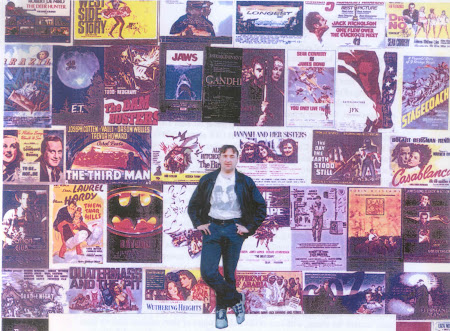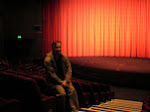
If you'd shown me this particular picture at the age of six, that would probably be as much as I would ever need to see of King Kong. It was around this same time that the (inferior) 1976 remake came along, which, I failed to realise at the time, was a new version of the story and NOT the terrifying original - when the subject of awards came along that year, and the film was nominated for a BAFTA for "special effects", the announcer uttered the words "And the nominations are...King Kong!", and in terror I immediately switched off the television, for fear that the BAFTAs would show clips from the film...
To young children, the idea of anything giant coming down to destroy them was a motif of primal fear, and Kong was probably the ultimate expression of this (the dinosaurs in Jurassic Park don't even come close.) There were adults too, such as film producer Merian C. Cooper who had nightmares on the subject: the idea of Kong came to him once when he dreamt of a mighty beast at the top of the Empire State Building. Whether he intended it as a means of scaring babies is doubtful; what he and his collaborator Ernst Schoedsack were interested in back in the 1930's was exploration - cinematic exploration, to faraway lands and bringing the seemingly impossible to the screen in the tradition of Edgar Rice Burroughs, H. Rider Haggard and many others.
In this case, the particular lost world in question is the suitably named Skull Island, where egotistic filmmaker Carl Denham (Robert Armstrong) - a thinly veiled version of Merian Cooper - has learned (goodness knows how) of a something on the island, mighty and monstrous. A thing named Kong.
Having already created vivid monsters in the likes of The Lost World and various other primitive monster films using hand-drawn or frame-by-frame animation, Hollywood found its Monster Man in Willis O'Brien: he and his protegee Ray Harryhausen went on to define a whole generation of often hokey but always inventive "creature features". Not only his meticulous animation, but significantly O'Brien's characterisation of Kong was the genius that made this film what it is today.
It is on the surface, the Beauty and the Beast story to the Nth degree. I've never fully accepted this analogy, as this particular Beast is so HUGE. Nor does he transfer into a handsome young prince - Kong is what he is: a sheer, unbridled mass of bestiality, and we love him all the more for it.
The brilliance of the enterprise is the scale on which O'Brien and the directors achieve in depicting the story, from amusing conceits such as giving Kong a big enough door for him to be able to walk through and terrorize the Skull Islanders, to the rightly famous climax on the world's tallest building.
Only on occasions does the effect reach tacky and unconvincing proportions, with occasional close-ups of a mechanical full-scale Kong head, that by today's standards shows up as technically naive and fleetingly spoils the suspense - something which Peter Jackson ironed out and "improved" for his overlong 2004 remake. That, and the screaming of Kong's would-be bride, Ann Darrow (Fay Wray).
Wray had already become associated with the fantastic in thrillers such as Doctor X and The Vampire Bat, as well as working with Ernst Schoedsack in The Most Dangerous Game, a macabre mystery set on a remote island and laying some of the groundwork for King Kong. In truth, her repertoire for this, her most famous film role, is not much more than having to look pretty, sitting in a ginormous hand, flapping her legs in defiance, and screaming - like blue murder! It became her forte, and although she admitted herself that her own natural reaction to the monster would be stunned silence, the cavalier Merian Cooper (and Carl Denham) exploited their leading lady to the full, for what film producers perceive to be great horror. Fay Wray was a good enough screamer for people to forget that she was also quite a good (and spirited) actress.
 On watching Kong for the first time at long last (in the safety of home during the daytime), my preconceived tears of fear had given way to tears of sadness - Kong has a heart and is fallible after all, like the rest of us. As the Empire State's most famous tourist eventually plummets from the 103rd floor, the aggrieved Carl Denham (whom you secretly wish had been the one to fall off the building instead) looks on at his prize act in a moment of reflection. "It wasn't the airplanes, it was beauty killed the beast."
On watching Kong for the first time at long last (in the safety of home during the daytime), my preconceived tears of fear had given way to tears of sadness - Kong has a heart and is fallible after all, like the rest of us. As the Empire State's most famous tourist eventually plummets from the 103rd floor, the aggrieved Carl Denham (whom you secretly wish had been the one to fall off the building instead) looks on at his prize act in a moment of reflection. "It wasn't the airplanes, it was beauty killed the beast."




No comments:
Post a Comment